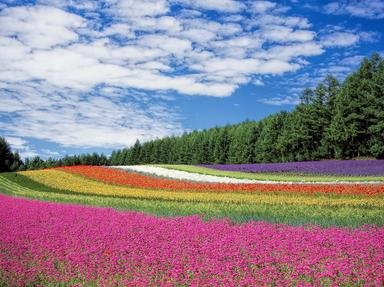Quiz Answer Key and Fun Facts
1. This quiz, "Kind of Blue", is titled after what is often regarded as the greatest jazz album of all time. What iconic American musician and composer released this album in 1959?
2. A coat colour that occurs in many cat breeds is described as blue, though actually a shade of silvery slate grey. What national epithet precedes "blue" in the name of the beautiful breed shown in the photo - formerly known as Archangel Cat?
3. Blue cheese is undoubtedly one of the most polarizing foods because of its assertive taste and smell. Which of these is a variety of blue cheese?
4. One of the most prized (and expensive) varieties of coffee is grown in the Blue Mountains of which island country?
5. What highly toxic chemical compound is named after the Greek word for "dark blue"?
6. Which major Hindu deity, one of whose attributes is the trident, is also called by the epithet of "Neelakantha", meaning "blue throat"?
7. What nomadic people of the Sahara region are known as the "blue people of the desert"?
8. Which was the title of the 1930 German film that brought international renown to charismatic actress Marlene Dietrich?
9. What very expensive blue pigment, frequently used in medieval and Renaissance painting for the robes of the Virgin Mary, was made by grinding lapis lazuli to a powder?
10. What kind of activity would you expect to be restricted in a place that implements "blue laws"?
Source: Author
LadyNym
This quiz was reviewed by FunTrivia editor
agony before going online.
Any errors found in FunTrivia content are routinely corrected through our feedback system.

